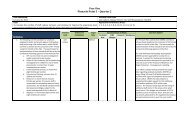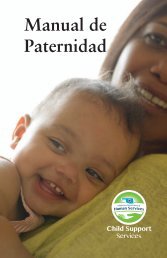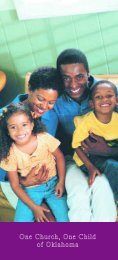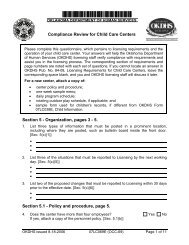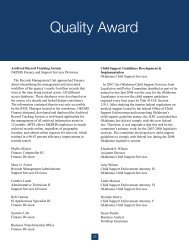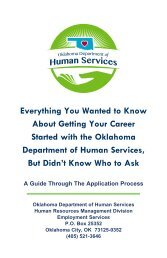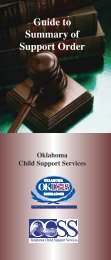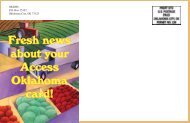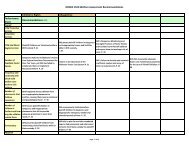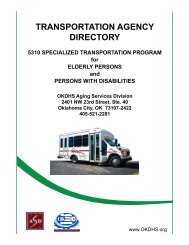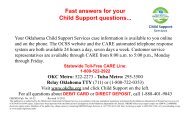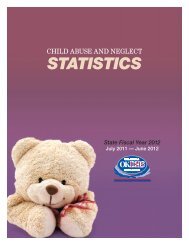The Oklahoma Pinnacle Plan - Oklahoma Department of Human ...
The Oklahoma Pinnacle Plan - Oklahoma Department of Human ...
The Oklahoma Pinnacle Plan - Oklahoma Department of Human ...
Create successful ePaper yourself
Turn your PDF publications into a flip-book with our unique Google optimized e-Paper software.
<strong>The</strong> <strong>Oklahoma</strong> <strong>Pinnacle</strong> <strong>Plan</strong>:<br />
An Improvement <strong>Plan</strong> for Child Welfare Services<br />
March 2012<br />
GLOSSARY<br />
Aging out <strong>of</strong> the system: Exiting OKDHS custody at the age <strong>of</strong> 18<br />
Caseload: <strong>The</strong> count <strong>of</strong> actual cases (families, children) that a worker is responsible for<br />
Child behavior checklist: <strong>The</strong> Child Behavior Checklist (CBCL) is a parent-report questionnaire<br />
in which the child is rated on various behavioral and emotional problems. It was first developed<br />
by Thomas M. Achenbach and has been one <strong>of</strong> the most widely-used standardized measures in<br />
child psychology for evaluating maladaptive behavioral and emotional problems in preschool<br />
subjects aged 2 to 3 or in subjects between the ages <strong>of</strong> 4 and 18.<br />
Citations: Achenbach, T. (1992). Manual for the Child Behavior Checklist/2-3 and 1992<br />
Pr<strong>of</strong>ile. Burlington, VT: University <strong>of</strong> Vermont <strong>Department</strong> <strong>of</strong> Psychiatry.<br />
Achenbach, T. (1991). Manual for the Child Behavior Checklist/4 - 18 and 1991<br />
Pr<strong>of</strong>ile. Burlington, VT: University <strong>of</strong> Vermont <strong>Department</strong> <strong>of</strong> Psychiatry.<br />
Related Internet Resources<br />
Achenbach System <strong>of</strong> Empirically Based Assessment<br />
Information regarding CBCL<br />
Comprehensive Home Based Services (CHBS): In-home and community services provided to<br />
families on a voluntary basis or as part <strong>of</strong> a court-ordered treatment plan. Families receive<br />
assistance covering a number <strong>of</strong> domains including child-rearing and ways to improve<br />
parenting, housekeeping and budgeting skills.<br />
Co-neutrals: Kathleen G. Noonan, Kevin M. Ryan, and Eileen Crummy; the three outside child<br />
welfare experts who will review the department’s action plan and act as arbiters <strong>of</strong> any dispute<br />
between the plaintiffs and the department.<br />
Congregate care: Placement settings such as shelters, group homes, and residential treatment<br />
centers. For purposes <strong>of</strong> this plan, group homes that have shift workers are the focus <strong>of</strong> the<br />
initiatives reducing the use <strong>of</strong> these facilities for children under 13 years <strong>of</strong> age. This would not<br />
include group homes that have house parents and a family-like setting such as Level B and<br />
Level C facilities.<br />
Emergency Foster care/home (EFC): Short-term substitute care for children in the custody <strong>of</strong><br />
OKDHS from birth through five years <strong>of</strong> age. Care is provided by a contracted agency to meet<br />
the child’s needs through service coordination and deliver in conjunction with OKDHS<br />
35



